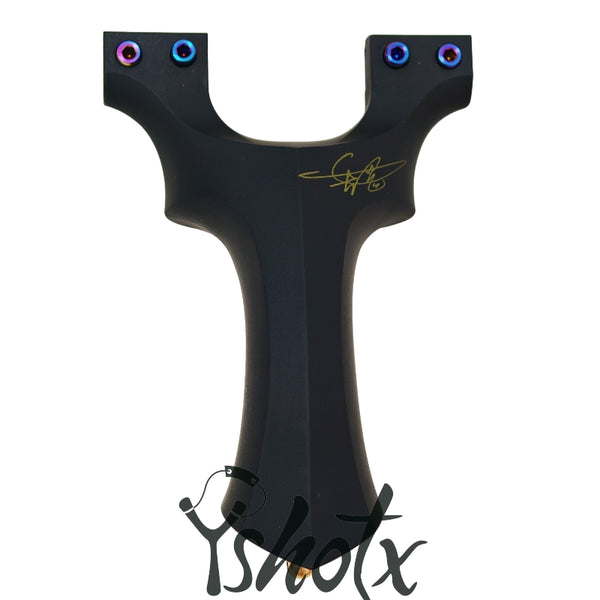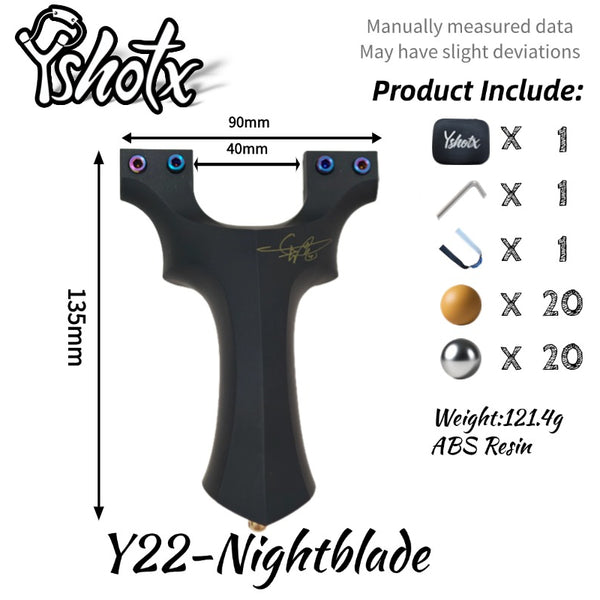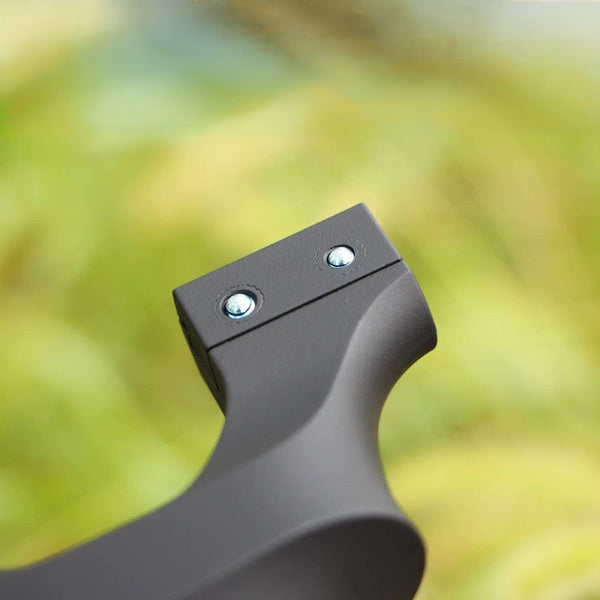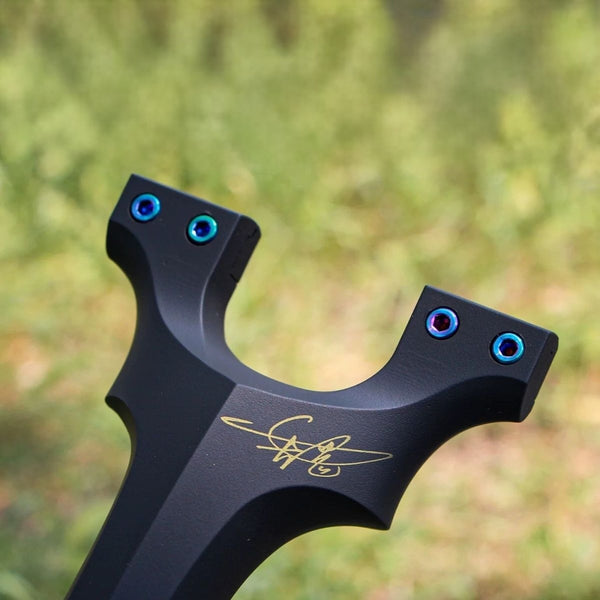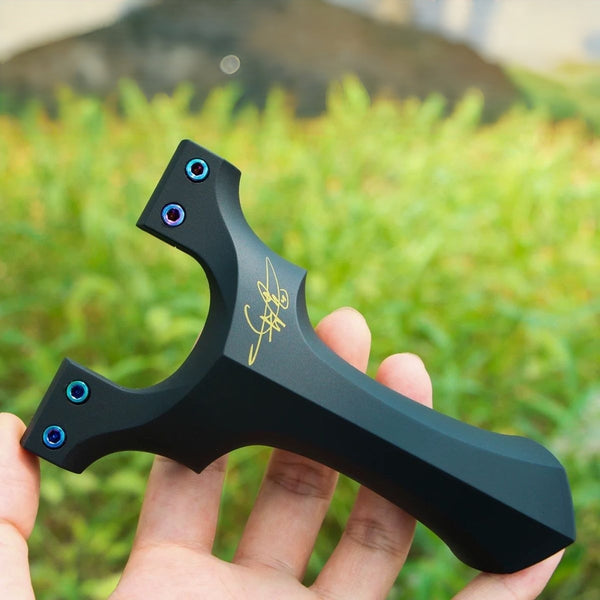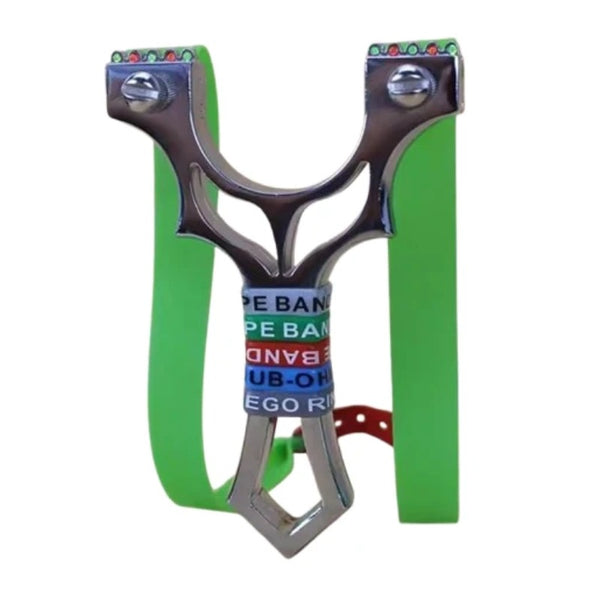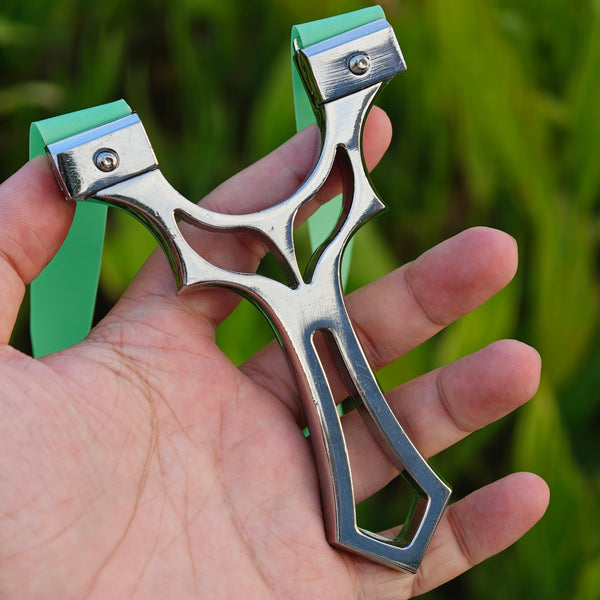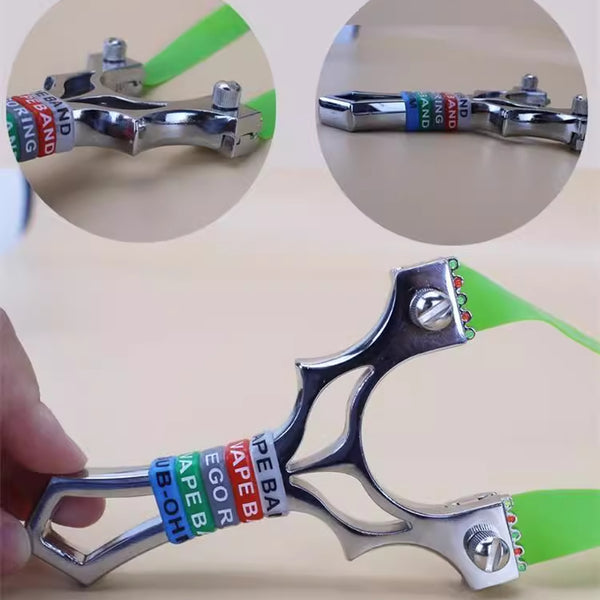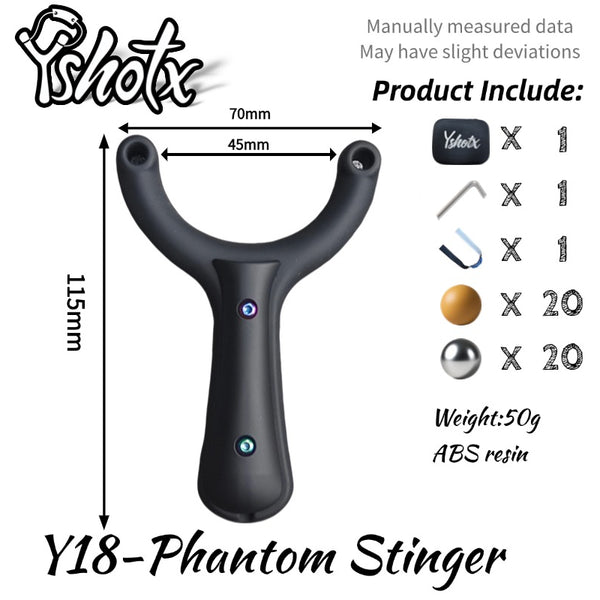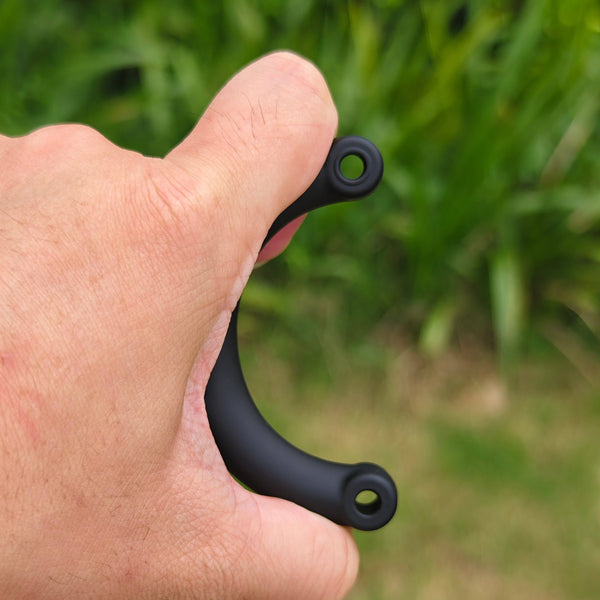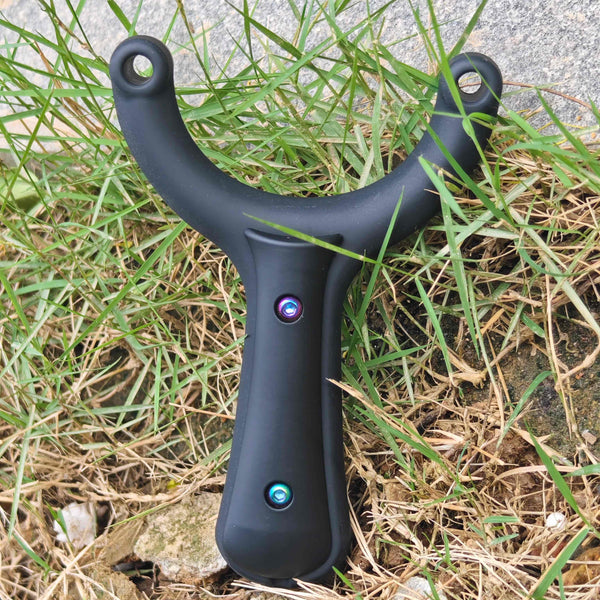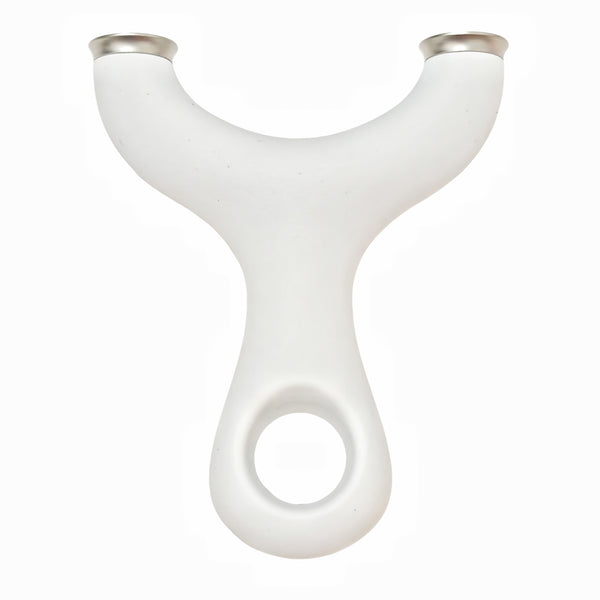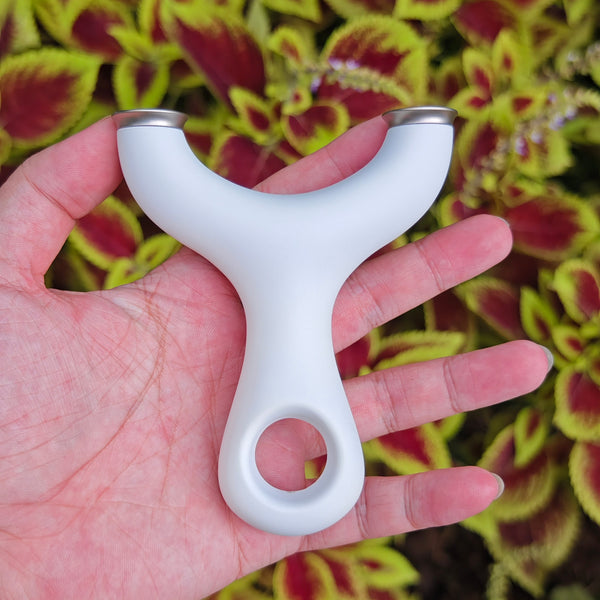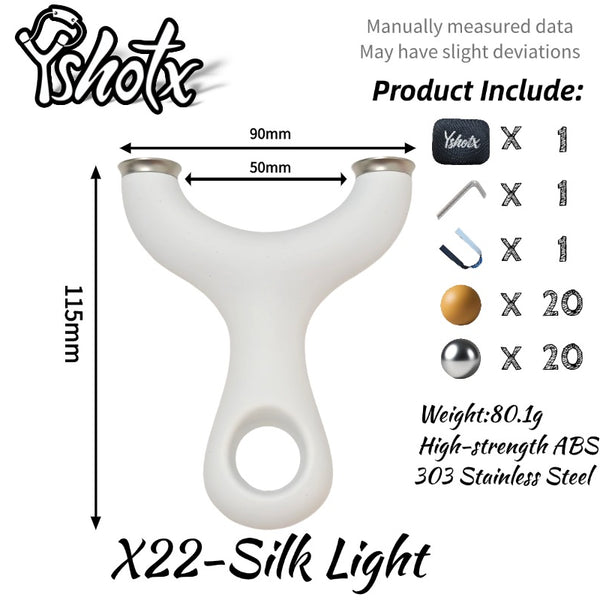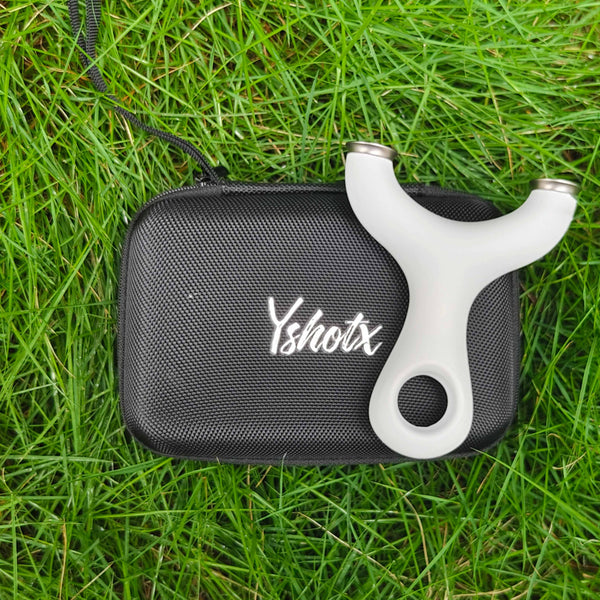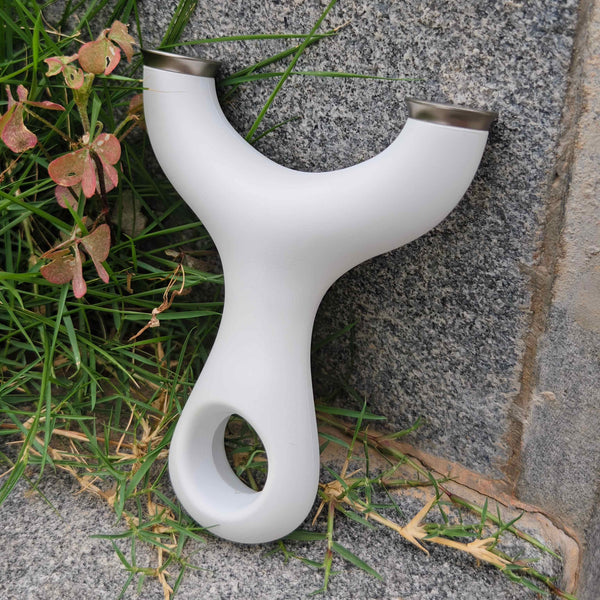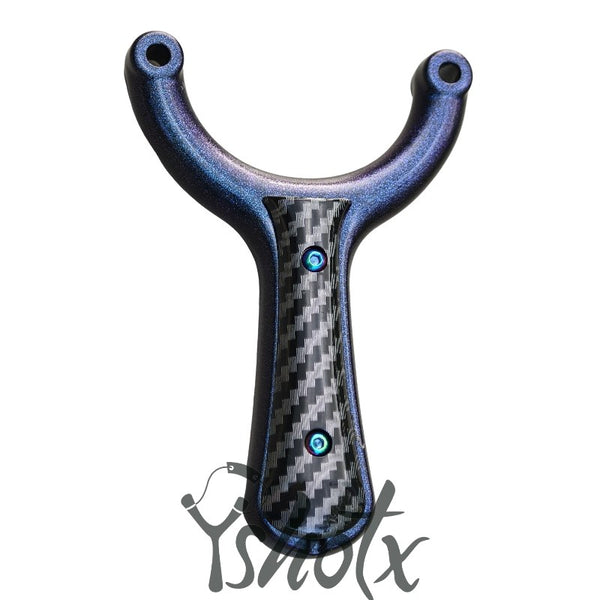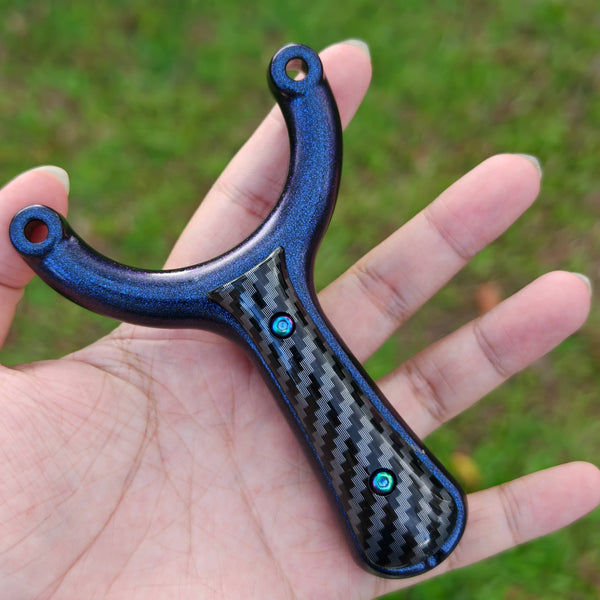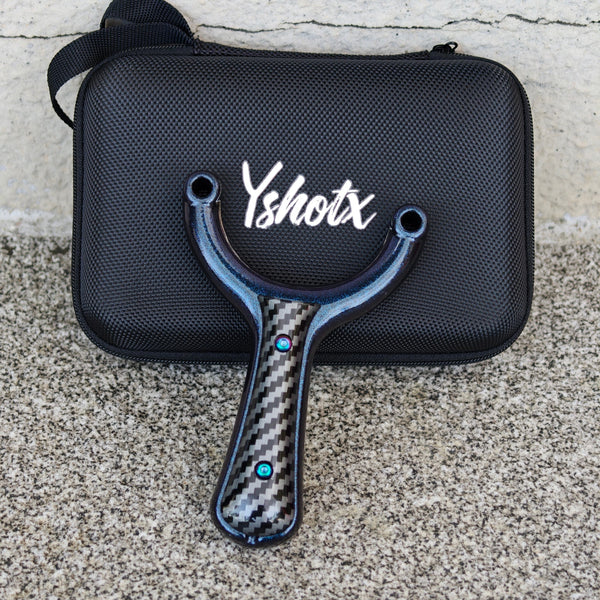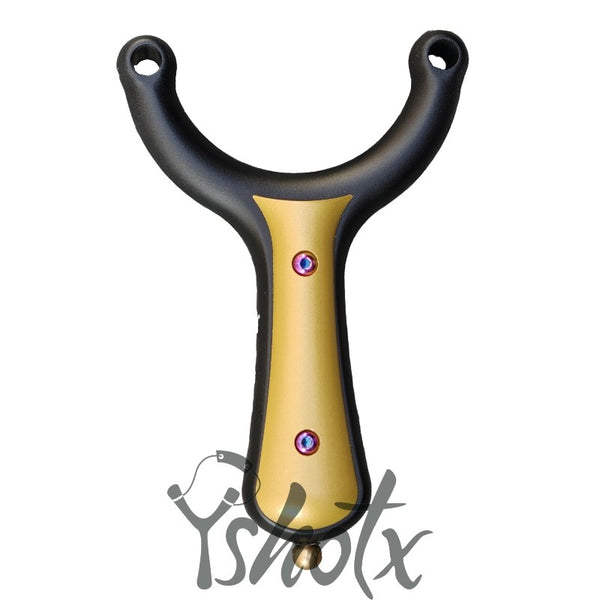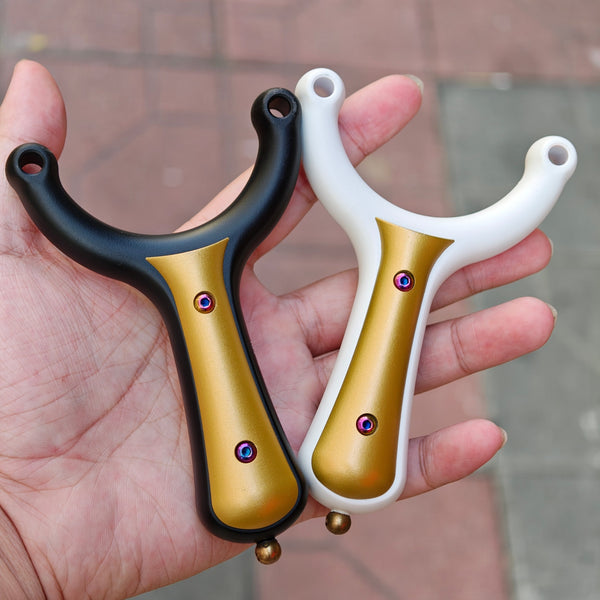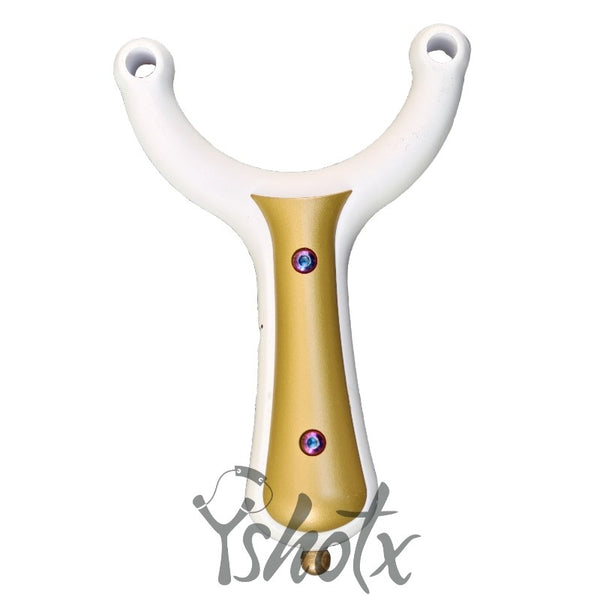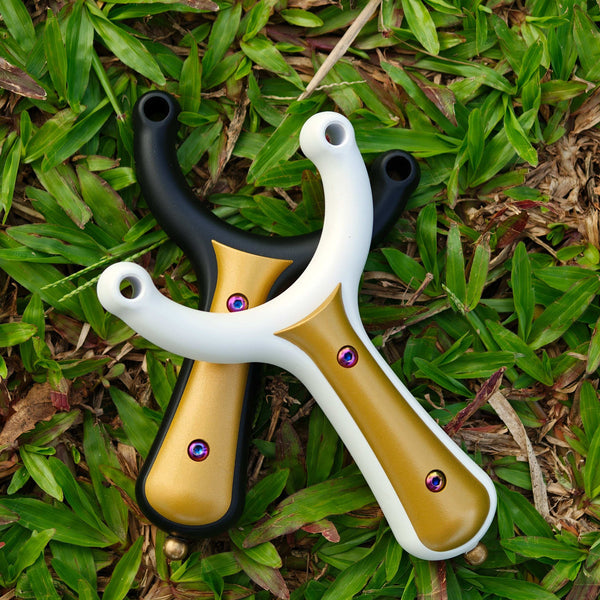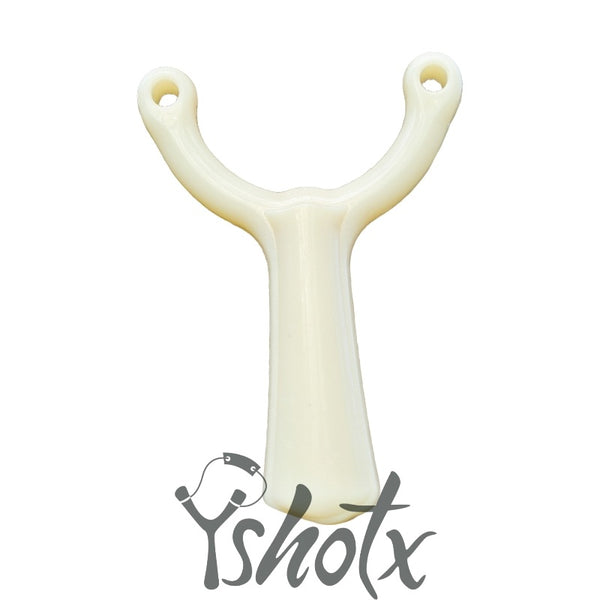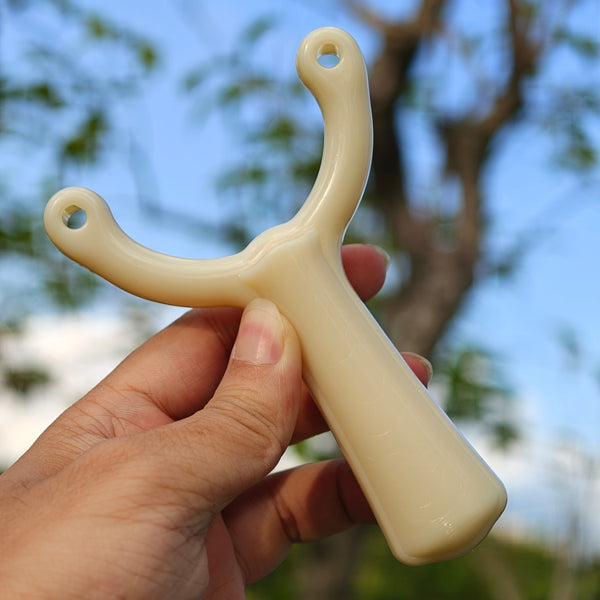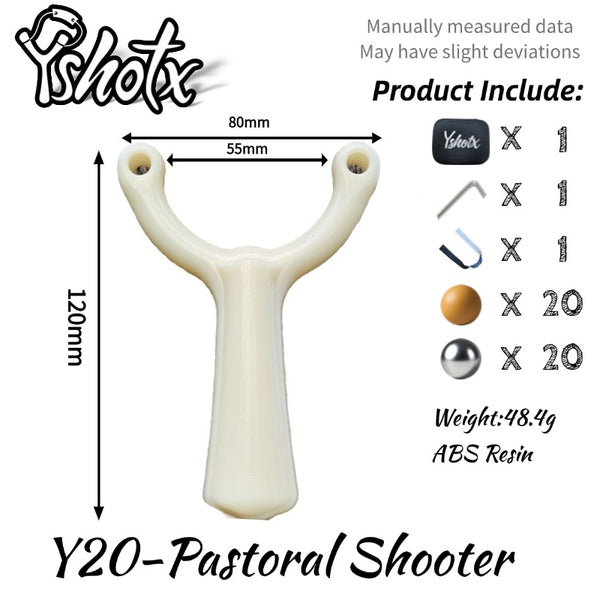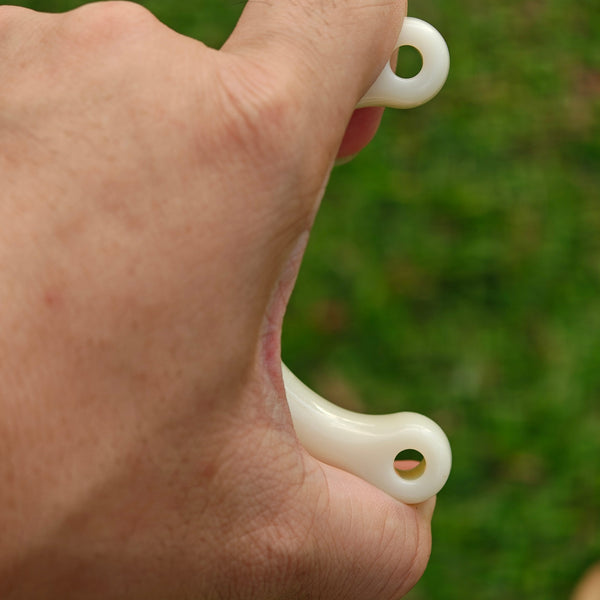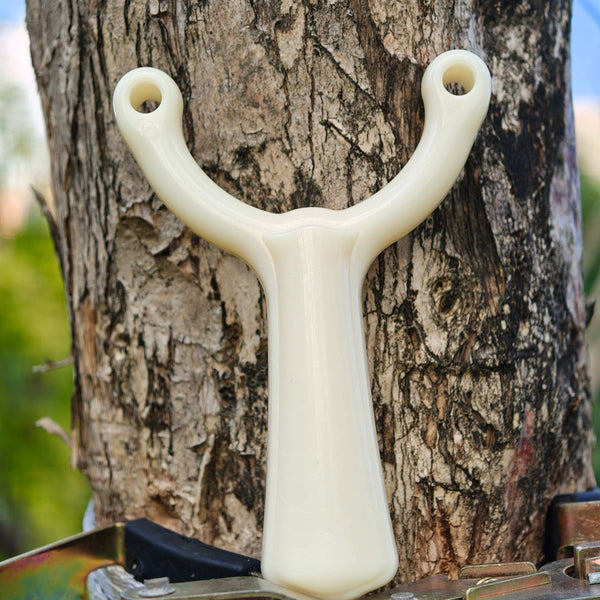Slingshot sights promise better accuracy, but do they deliver? This guide examines fiber-optic references, laser dots, and mechanical sights through evidence from community tests, manufacturer insights, and physics principles. Learn when these tools help, when they fall short, and how to build skills for consistent shots without relying on gadgets.
Quick Overview of Slingshot Sights
Slingshot sights come in various forms, each designed to improve aiming. Fiber-optic points offer a bright visual cue for better alignment. Laser sights project a dot for quick targeting. Mechanical or reflex sights provide a reticle for precision. However, slingshots differ from rifles or bows because their flexible bands and pouches create variability in shot paths. This guide breaks down the evidence to help you decide if sights fit your needs.
Key Findings: Fiber-optics aid beginners by building consistency, lasers work in low light but struggle with zeroing, and reflex sights suit only custom, rigid setups. Always prioritize technique for long-term success.

How Slingshots Work and Why Sights Can Be Tricky
Slingshots launch projectiles from a pouch held by elastic bands, unlike guns with fixed barrels. The shot path depends on draw length, band tension, pouch mass, and release quality. Small changes—like a slight twist in the pouch—can shift where the ammo lands. Fixed sights assume a stable path, but slingshots have more moving parts, leading to issues like parallax (where the sight line doesn't match the actual trajectory).
Physics plays a big role here. Bands store energy non-linearly, meaning force builds unevenly as you draw. This can cause inconsistent velocities, making it hard for sights to stay accurate across shots. Studies on slingshot dynamics show that even minor variations in temperature or band age can alter results by 10-20%.
Source: arXiv on slingshot physics
Types of Slingshot Sights Explained
Understanding the options helps you choose wisely.
Fiber-Optic Reference Points
These are small rods or beads that gather light to create a bright spot on the fork. They act as a visual marker, not a full aiming system.
Laser Dot Sights
A battery-powered device projects a red or green dot onto the target for direct aiming.
Mechanical or Reflex Sights
Compact units with reticles or dots, similar to those on firearms, mounted on the frame for aligned shots.
Each type has unique strengths, but their effectiveness depends on your slingshot setup and shooting style.
Do Fiber-Optic Sights Improve Slingshot Accuracy?
Fiber-optic sights are a simple upgrade that gathers ambient light to make a bright reference point on the fork. This helps you quickly find the same alignment for each shot.
Why They Help: They reduce the time to acquire a sight picture, especially in changing light. Beginners often see faster progress in learning gap shooting, where you use the space between the fork and target for elevation. Community tests show fiber-optics can tighten groups by 20-30% during early training by promoting consistent anchors.
For example, in a 2025 Slingshot Forum thread, users reported improved 10-meter groups from 8 cm to 6 cm after adding a fiber-optic bead. Manufacturers like Yshotx recommend them as low-cost tools to build muscle memory.
When They Don't Help: If you ignore basics like release technique, sights alone won't fix poor shots. They're less useful in very low light without enough ambient glow.
How to Use Them: Mount the bead at eye level in your anchor position. Practice drawing to the same spot, then log your groups to track improvements.
Are Laser Sights Effective for Slingshots?
Laser sights beam a dot onto the target, promising point-and-shoot simplicity. They're popular for low-light scenarios.
Why They're Often Seen as Gimmicks: Slingshot bands stretch and release dynamically, so the projectile path varies with draw length, band condition, and pouch alignment. A fixed laser can't account for this, leading to inconsistent zeroing. Community feedback from Slingshot Forum highlights shifts of 10-20 cm in point of impact after just a few sessions due to rubber aging or temperature changes.
In bright daylight, the dot can wash out, reducing usefulness. A 2025 Reddit r/slingshots poll showed 65% of users found lasers unreliable for precision beyond 5 meters.
Niche Benefits: In dim conditions or with rigid custom builds (like reinforced frames), lasers aid quick targeting. Some hunters report 15-20% faster acquisition in twilight, per SimpleShot reviews.
How to Test Them: Zero at 10 meters, then vary draws by 2 cm and measure offsets. Expect adjustments often.
Source: Slingshot Forum laser discussions
Do Mechanical or Reflex Sights Work on Slingshots?
Mechanical sights (like iron sights) or reflex units (red-dot reticles) aim to provide a fixed reference like on rifles.
Why They're Rarely Recommended: Slingshots lack a barrel's rigidity, so the pouch path isn't fixed. This causes parallax errors where the sight line doesn't match the ammo's trajectory. Forum experiments show groups widening by 25-40% compared to instinctive methods due to flex in bands and frames.
Only in specialized "slingbow" hybrids or ultra-rigid setups do they shine, but these are custom and expensive.
Limited Use Cases: For target practice with consistent draws, a micro reflex might help, but 2025 theslingshotforum.com threads report few success stories without major modifications.
Practical Advice: If trying one, mount securely and zero frequently. Most pros skip them for technique-focused training.
The Science Behind Slingshot Sights: Physics and Ergonomics Explained
Slingshot sights interact with the system's physics in specific ways.
Non-Linear Band Behavior and Hysteresis
Bands don't stretch evenly; force builds non-linearly, and energy is lost (hysteresis) on release. This variability shifts trajectories, making fixed sights unreliable. arXiv models show 10-15% velocity changes from minor draw variations, affecting point of impact.
Pouch Mass and Release Dynamics
Heavy or uneven pouches cause rotation, leading to Magnus effect curves (10-20 cm at 20 m). Sights can't correct release flaws—focus on smooth techniques first.
Parallax and Range Dependence
Fixed sights create offsets that grow with distance (5-15 cm at 10-20 m). Learn gap tables instead for parabolic paths.
These factors explain why technique trumps sights: Consistent anchors and releases minimize variables.
Hands-On Tests to Evaluate Slingshot Sights
Run these protocols to generate your own data and see if sights work for your setup.
Test A: Fiber-Optic vs. No Reference
Conditions: Calm air, same ammo and frame.
Procedure: Shoot 5 groups of 5 shots with fiber-optic, then without. Measure group diameter and point of impact.
Expected Results: Fiber-optics often reduce groups by 20-30% for beginners, per Slingshot Forum data.
Test B: Laser Dot Stability
Zero laser at 10 m. Vary temperature (warm vs. cool room) and band age (new vs. 500 shots). Record shifts.
Results: Shifts of 10-20 cm common, confirming gimmick status for most.
Test C: Release Dynamics with Pouch Variations
Use light, medium, heavy pouches. Record with slow-motion video; measure lateral deviation.
Results: Heavy pouches add 15-25% spread—quantify Magnus effects.
Training to Build Skills With or Without Sights
Start with aids, then transition to independence for reliable accuracy.
Phase 1: Anchor Building with Fiber-Optic
Use the bead to lock in head position and cheek contact. Shoot 50 rounds daily, logging consistency.
Phase 2: Gap Training Drills
Practice offsets at 5-15 m. Repeat 100-shot sessions to map gaps.
Phase 3: Instinctive Shooting Shift
Remove aids gradually; focus on target while maintaining anchor.
Phase 4: Advanced Tuning
Use chronographs and video for release analysis. Aim for 5 cm groups at 10 m.
Community veterans on Reddit report this approach yields 25% tighter groups over time.
When to Buy Slingshot Sights: A Practical Guide
-
Fiber-Optic Beads: Buy if you're new or shoot in varying light—inexpensive ($5-10) and easy to install.
-
Laser Sights: Consider for low-light hunting, but test thoroughly—prices start at $20, but expect frequent adjustments.
-
Reflex Sights: Only for custom rigs; $50+ and rarely worth the weight.
Look for 2025 models with adjustable mounts from brands like Yshoxt.
FAQ
Q: Do top slingshot competitors use sights?
A: Most rely on instinctive aiming and anchors; sights are training tools, not essentials.
Q: Can lasers improve low-light shooting?
A: Yes, for quick targeting, but zeroing issues limit precision.
Q: How do fiber-optics help beginners?
A: They speed up learning consistent alignment and gaps.
Sources
-
Yshotx-Slingshot expertise
-
Slingshot Forum Laser Threads
-
Reddit r/slingshots Sights Discussion
-
arXiv Slingshot Modeling
-
Real World Physics Problems










